UPSC Daily Current Affairs- 20th July 2023 | Current Affairs & Hindu Analysis: Daily, Weekly & Monthly PDF Download
GS-I
Bura Chapori Wildlife Sanctuary
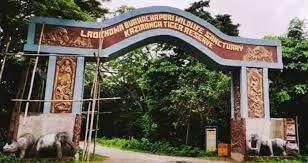
Why in News?
Recently, several people injured over clash between forest team and illegal encroachers at Bura Chapori Wildlife Sanctuary.
About Bura Chapori Wildlife Sanctuary
- It is located on the southern bank of river Brahmaputra in the Sonitpur district, Assam.
- It is a part of the Laokhowa-Burachapori eco-system.
- Flora:
- It comprises of a mosaic of wet alluvial grassland, riparian and semi-evergreen forests dotted by wetland and river systems.
- The grassland is also rich in various kinds of medicinal herbs and plants.
- Fauna:
- It is home to the Great Indian one-horned rhinoceros, tiger, leopard, wild buffalo, hog deer, wild pig, and elephants.
- It includes the highly endangered Bengal Florican.
- It also makes it an ideal breeding place for several species of migratory birds during the winter season.
Source: DTE
GS-II
Using name ‘INDIA’ in Political Alliances
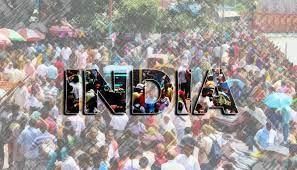
Why in News?
A complaint has been lodged with the Delhi police against 26 Opposition parties for the alleged “improper use” of the name ‘INDIA’ in their newly formed alliance.
Why discuss this?
- The complainant argues that the parties have violated the Emblems and Names (Prevention of Improper Use) Act, 1950.
- It has allegedly attempted to gain “undue influence” in elections by using the name ‘INDIA’ for their coalition.
- It alleges that by naming their alliance as ‘INDIA’, they have attempted to exert undue influence on the electorate and may be prosecuted under Section 171F of the Indian Penal Code, 1860.
About Emblems Act, 1950
- The Emblems Act, 1950 aims to prevent the improper use of certain emblems and names for commercial and other purposes.
- The Act seeks to protect the dignity and sanctity associated with national emblems, insignia, and names of international organizations.
Source: The Indian Economy
India-US Strategic Clean Energy Partnership

Why in News?
The Ministerial meeting of the US-India Strategic Clean Energy Partnership (SCEP) was held between Indian Minister of Petroleum and Natural Gas and US Energy Secretary in New Delhi.
- Both sides noted the critical importance of bilateral clean energy engagement and the achievements of the SCEP in strengthening energy security, creating opportunities for clean energy innovation, addressing climate change and creating employment generation opportunities.
What are the Key Highlights of the Meeting?
- Review of the Ambitious and Dynamic SCEP Mandate:
- Collaboration across a wide breadth of clean energy work streams, including clean and renewable energy, energy efficiency
- Emerging technologies like battery storage and swapping technologies, gas hydrates, advanced biofuels, and hydrogen and electrolyzed production.
- Commitments:
- Agreed to work toward development of Net zero village in India to support the clean energy transition.
- Establishment of the public-private Energy Storage Task Force to support the clean energy transition;
- Deployment of hydrogen technologies through the public-private Hydrogen Task Force.
- Launch of the U.S.-India New and Emerging Renewable Energy Technologies Action Platform (RETAP) to accelerate development of key technologies to advance common ambitious clean energy goals.
- Affirmed Global Biofuels Alliance:
- This Alliance will be aimed at facilitating cooperation and intensifying the use of sustainable biofuels, including in the transportation sector.
- Brazil, India and US as leading biofuel producers and consumers, with other interested countries.
- The Alliance shall work in collaboration with the Clean Energy Ministerial Biofuture Platform, the Mission Innovation Bioenergy initiatives, and the Global Bioenergy Partnership (GBEP).
- This Alliance will be aimed at facilitating cooperation and intensifying the use of sustainable biofuels, including in the transportation sector.
- South Asia Group for Energy (SAGE):
- Both sides launched the SAGE to deepen the engagement between Indian agencies and US national laboratories to support research, analysis and capacity building activities such as building modelling capacity in Life Cycle Assessment of low carbon technologies and analytics on energy consumption in building sector.
- Other Concerns:
- The addition of Carbon Capture, Utilization and Storage as a work stream under the Emerging Fuels and Technology Pillar.
- The collaboration of US Agency for International Development (USAID) with various Indian agencies including Indian Railways, NTPC Green National Skills Development Corporation, Skills Council for Green Jobs, and the Forum of Regulators.
What is Strategic Clean Energy Partnership?
- The SCEP was launched in accordance with the US - India Climate and Clean Energy Agenda 2030 Partnership announced by both countries at the Leaders’ Summit on Climate held in 2021.
- The SCEP advances energy security and innovation with greater emphasis on electrification and decarbonization of processes and end uses; scaling up emerging clean energy technologies; finding solutions for hard-to-decarbonize sectors; and deploying technical solutions.
- The SCEP was earlier established as the Strategic Energy Partnership in 2018 and had replaced the U.S.-India Energy Dialogue, the previous intergovernmental engagement for energy cooperation.
Source: PIB
Unique Land Parcel Identification Number (ULPIN) to curb Land-Linked Illegal Activities
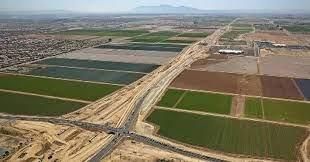
Why in News?
President Murmu emphasized the importance of implementing a Unique Land Parcel Identification Number (ULPIN).
What is ULPIN?
- ULPIN or Bhu-Aadhaar is a 14-digit Alpha–Numeric Unique ID for each land parcel.
- This is the next step in the Digital India Land Records Modernisation Programme (DILRMP) which began in 2008.
- The identification will be based on the longitude and latitude coordinates of the land parcel, and is dependent on detailed surveys and geo-referenced cadastral maps.
- ULPIN is generated using the Electronic Commerce Code Management Association (ECCMA) standards during the importing of the geo-referenced shape file into BhuNaksha, a cadastral mapping solution of NIC.
Benefits of ULPIN
- Curbing malpractices: The implementation of ULPIN and digitization of land records can significantly reduce unethical and illegal activities related to land. The transparency brought about by digitization enhances accountability and curbs malpractices.
- Efficient Land Use: ULPIN will facilitate proper utilization of land parcels and aid in the formulation and implementation of new schemes.
- Linkage with E-Courts: Connecting E-Courts with land records and registration databases offers multiple benefits, including improved accessibility to information and streamlined legal processes related to land disputes.
- Indestructible documentation: Digitization of land records proves valuable in times of calamities such as floods and fires, as it helps in preventing loss of documents and expedites the recovery process.
Impacts on Development and Welfare
- Development Catalyst: By providing transparent and accessible land information, digitization supports informed decision-making and effective resource management.
- Proper Scheme Implementation: Linking land records with various government departments facilitates the efficient implementation of welfare schemes ex. PM Awas Yojana.
- Beneficiary targeting: Accurate and up-to-date land data helps identify beneficiaries and ensures the targeted delivery of benefits and services.
Source: The Times of India
East Asia Summit
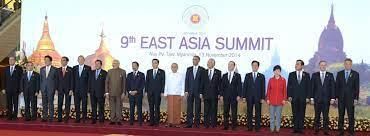
Why in News?
Recently, India's External Affairs Minister attended the 13th East Asia Summit Foreign Ministers’ Meeting and utilized the opportunity to engage in discussions with China's top diplomat, on the sidelines of the event.
- They discussed outstanding issues along the Line of Actual Control (LAC), emphasizing the importance of peace and the disengagement of troops.
What is the East Asia Summit?
- About:
- The EAS was established in 2005 as an Association of Southeast Asian Nations (ASEAN)-led initiative.
- The EAS is the only leader-led forum in the Indo-Pacific that brings together all key partners to discuss political, security and economic issues of strategic importance.
- The EAS operates on the principles of openness, inclusiveness, respect for international law, ASEAN centrality, and ASEAN’s role as the driving force.
- The idea of an East Asia Grouping was first proposed by then Malaysian Prime Minister Mahathir Mohamad in 1991.
- The first summit was held in Kuala Lumpur, Malaysia on 14 December 2005.
- Members:
- The EAS comprises 18 members: the 10 ASEAN countries (Brunei, Cambodia, Indonesia, Laos, Malaysia, Myanmar, Philippines, Singapore, Thailand, and Vietnam) and eight dialogue partners (Australia, China, India, Japan, New Zealand, Republic of Korea, Russia and the United States).
- EAS Meetings and Processes:
- The EAS is usually held alongside ASEAN Leaders' meetings in the fourth quarter of every year.
- The EAS Leaders’ Summit is supported by various ministerial and senior officials’ meetings, such as the Foreign Ministers’ Meeting, the Economic Ministers’ Meeting, the Defence Ministers’ Meeting, and the Education Ministers’ Meeting.
- The EAS has six priority areas of cooperation: environment and energy; education; finance; global health issues and pandemic diseases; natural disaster management; and ASEAN connectivity.
- The EAS also covers other topics of common interest and concern, such as trade and investment, regional architecture, maritime security, non-proliferation, counterterrorism, and cyber security.
- India and East Asia Summit:
- India has been a founding member of the EAS since 2005 and has actively participated in all its meetings and activities.
- India views the EAS as a key platform for enhancing its Act East Policy and strengthening its strategic partnership with ASEAN and other regional countries.
- At the East Asia Summit in Bangkok in November 2019, India had unveiled India’s Indo-Pacific Oceans Initiative (IPOI), which is aimed at forging partnerships to create a secure and stable maritime domain.
- India has contributed to the EAS cooperation in various fields, such as disaster management, renewable energy, education, health, connectivity, maritime security and counterterrorism.
Source: TH
EC begins public hearing on draft delimitation in Assam
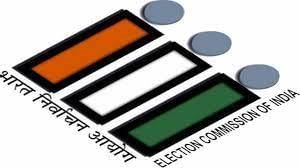
Why in News?
- The Election Commission began public hearings in Guwahati on the draft delimitation proposal for Assam.
- The full Bench of the commission, headed by Chief Election Commissioner Rajiv Kumar, will meet political parties, civil society organisations and other sections of society.
- The public hearings are part of the consultative exercise by the commission during the process of delimitation.
Background
- Delimitation process started in Assam
- In December 2022, the Election Commission began the delimitation of Assembly and Parliamentary constituencies in Assam by using the Census data of 2001 for the readjustment seats.
- Publication of draft delimitation process
- The draft delimitation proposal for Assam was published on June 20, 2023 and objections were invited till July 11.
- It had proposed to retain the number of Assembly seats in Assam at 126 and the Lok Sabha constituencies at 14.
- It has also proposed that the assembly seats reserved for Scheduled Castes be increased from eight to nine and Scheduled Tribe seats from 16 to 19.
- The draft of delimitation further proposes to reserve two parliamentary seats for STs, and one parliamentary seat for SCs.
- Matter reaches SC
- Recently, 10 opposition leaders from 9 parties of Assam approached the Supreme Court challenging the ECI’s draft delimitation order.
- The parties have questioned the methodology of carrying out the ongoing delimitation exercise and using of different average assembly sizes for different districts.
What is Delimitation?
- According to the Election Commission, the word ‘delimitation’ is defined as “the act or process of fixing limits/boundaries of territorial constituencies in a country or a province having a legislative body”.
- In the Indian context, the exercise of redrawing the boundaries of Lok Sabha and Legislative Assembly Constituencies in a region is known as delimitation.
- In this process, the number of seats allocated to a particular state/UT in Lok Sabha or in the Legislative Assembly may vary.
- For example – Delhi, a union territory with legislative assembly, has 7 Lok Sabha constituencies while in the Legislative Assembly it has 70 constituencies.
Why is it needed?
- Delimitation helps in redrawing the boundaries (based on the data of the last Census) in such a way that the population of all the constituencies, as far as practicable, remain equal throughout the State/UT.
- It ensures a fair division of geographical areas so that all political parties or candidates contesting elections have a level playing field in terms of a number of voters.
What are the Constitutional Provisions regarding delimitation in India?
- Article 82 and Article 170 of the Constitution empowers the Parliament to readjust the allocation of seats in the Lok Sabha and the Legislative Assemblies of States respectively, after every census.
- Accordingly, the Parliament enacts a Delimitation Commission Act and an independent high-powered panel known as the Delimitation Commission is constituted to carry out the exercise of delimitation.
- The Parliament has enacted the Delimitation Commission Acts in 1952, 1962, 1972 and 2002 for this purpose.
- There was no Delimitation Commission Act after the 1981 and 1991 census.
- The present delimitation of constituencies has been done on the basis of 2001 census data under the provisions of Delimitation Commission Act, 2002.
- The next Delimitation Commission will be set up after 2026.
- Further, Article 330 and Article 332 of the Constitution provide for re-fixing the number of seats reserved for Scheduled Castes (SCs) and Scheduled Tribes (STs) in the Lok Sabha and the Legislative Assemblies of the states, on the basis of the 2001 census.
What is Delimitation Commission?
- The Delimitation Commission is a high-powered committee entrusted with the task of drawing and redrawing of boundaries of different constituencies for state assembly and Lok Sabha election.
- It is appointed by the President and works in collaboration with the Election Commission.
- The Commission consists of –
- A retired or working Supreme Court Judge (chairperson)
- Election Commissioner
- Concerned State Election Commissioners
- The Commission’s orders have the force of law and cannot be called in question before any court.
- The Commission’s orders are laid before the Lok Sabha and the legislative assemblies concerned, but they cannot effect any modifications in the orders.
Source: The Times of India
More than court action, revisit the Indus Waters Treaty
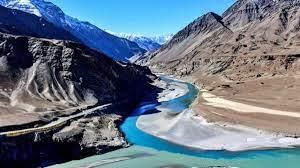
Why in News?
- India raised objection when Pakistan initiated arbitration at the Permanent Court of Arbitration to address the interpretation and application of the IWT.
- On July 6, 2023, the court unanimously passed a decision (which is binding on both parties without appeal) rejecting each of India’s objections.
Central Idea
- The Indus Waters Treaty (IWT), 1960 has long been hailed as a remarkable example of cooperation between India and Pakistan, despite their tumultuous relationship. The treaty has endured numerous conflicts and established detailed procedures for dispute resolution.
- However, in recent years, there has been an increase in the utilization of judicial recourse to settle disputes arising from India’s construction of run-of-river hydroelectric projects.
What is Indus Water Treaty (IWT)?
- The Indus Waters Treaty is a water-distribution treaty between India and Pakistan, brokered by the World Bank signed in Karachi in 1960.
- According to this agreement, control over the water flowing in three eastern rivers of India the Beas, the Ravi and the Sutlej was given to India.
- The control over the water flowing in three western rivers of India the Indus, the Chenab and the Jhelum was given to Pakistan.
What are the Disputes and Challenges?
- Construction and design of run-of-river hydroelectric projects by India- Kishanganga (a tributary of the Jhelum) and Ratle, a hydro-electric project on the Chenab- objections from Pakistan– potentially impact the flow and utilization of water downstream.
- Pakistan initiated arbitration at Permanent Court of Arbitration- India objected to the jurisdiction of the court– advocating for the use of the neutral expert process instead.
- Pervasive atmosphere of distrust and strained relations between India and Pakistan, which hampers effective cooperation under the treaty.
- As precipitation patterns and runoff are altered, the assumption of fixed water availability under the IWT becomes increasingly uncertain.
- The treaty’s allocation of water resources does not adequately consider the potential impact of climate change on future water availability, creating a need for flexible mechanisms.
- The IWT does not sufficiently address the rapidly growing industrial and agricultural needs of both countries.
Principles of water course
- Equitable and Reasonable Utilization (ERU): This principle emphasizes the fair and reasonable use of water resources among riparian states.
- No Harm or Do No Harm Rule (NHR): The no harm principle states that riparian states should not cause significant harm to other states sharing the same watercourse. It requires taking necessary measures to prevent or mitigate any adverse impacts that might arise from water-related activities.
- Integrated Water Resources Management (IWRM): IWRM approach considers water resources as an interconnected system, taking into account social, economic, and environmental factors. Achieve optimal and sustainable use of water resources.
- Basin-wide Management: Water resources should be managed at the basin or watershed level, as it is the most natural unit for water management.
- Prior Informed Consent: Obtaining the consent of affected communities and stakeholders before implementing projects or activities that may have significant impacts on water resources.
- Environmental Protection: Need to protect and conserve the ecological integrity of watercourses. Preservation of aquatic ecosystems, biodiversity, and water quality.
- The Role of the World Bank: The World Bank, as a party to the treaty, could utilize its platform to foster a transnational alliance of epistemic communities.
Conclusion
- By incorporating principles of equitable water utilization and preventing significant harm, the IWT can better address the evolving needs and climate change impacts of India and Pakistan.
- The World Bank’s involvement in facilitating collaboration and policy convergence could play a pivotal role in shaping a revised treaty that fosters long-term cooperation and sustainability in the shared management of the Indus waters.
Source: TH
GS-III
Henley Passport Index 2023
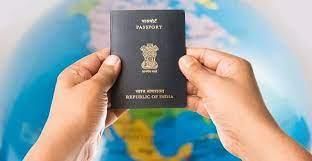
Why in News?
The latest ranking published by Henley Passport Index, released recently, puts India's passport at the 80th spot, moving it up five places from its position in 2022.
About Henley Passport Index 2023
- The Henley Passport Index is the original, authoritative ranking of all the world’s passports according to the number of destinations their holders can access without a prior visa.
- It is published by Henley & Partners, a global citizenship and residence advisory firm, in partnership with the International Air Transport Association (IATA).
- The index includes 199 different passports and 227 different travel destinations.
- The index is based on exclusive data from the International Air Transport Association (IATA) and enhanced by Henley & Partners’ research team.
- Highlights of Henley Passport Index 2023:
- Singapore has topped the passport rankings with visa-free access to 192 global destinations.
- With visa-free access to 190 destinations, three European countries – Germany, Italy and Spain – share the second rank on the list.
- Japan, the previous top-rank holder, slipped down to the third rank. Japan shares the rank with Austria, Finland, France, Luxembourg, South Korea and Sweden.
- With 101, 102 and 103 ranks respectively, Syria, Iraq and Afghanistan are the world’s weakest passports. Pakistan is on the 100th spot.
- India’s rank:
- India has climbed seven places to 80th rank from 87 last year.
- It shares the spot with Senegal and Togo, with visa-free access to 57 destinations.
Source: The Economic Times
|
52 videos|5374 docs|1136 tests
|





















